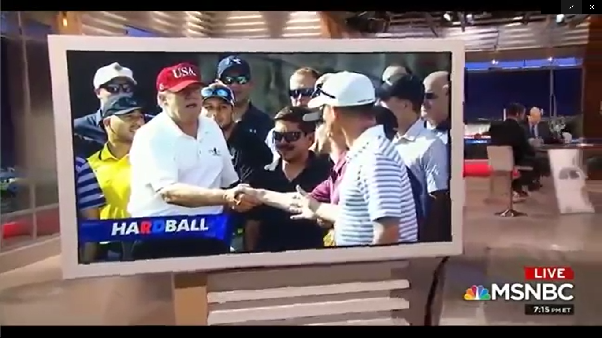Metaphors 21, some more like micro-essays with graphics toppings
[ by Charles Cameron — chyrons, headlines and quotes as before — including that damn elite schools admissions fraud — some moving in the direction of micro-essays with graphics toppings — in other words, don’t miss them! ]
.
What I’m after here is understanding how reading between the lines corresponds with knowing the known unknowns, and how those two mutually compatible metaphors triangulate with a more distant pair, following trails of breadcumbs and connecting dots.
Somehow our writer found all four necessary to outline — there’s another one — her insight.
So: what can we learn?
Perhaps the most curious detail comes elsewhere in the G.R.U. indictment, when Mueller notes how one particular spear-phishing attempt aimed at the Hillary Clinton campaign was both a “first time” effort, and conducted “after hours.” These may seem like bread crumbs to a popular audience, but they’re more significant Morse-code tappings to jurisprudential scholars, suggesting that the hackers’ strategy could have shifted at a crucial moment.
This investigation is a classic Gambino-style roll-up,” a source close to the White House observed in November 2017, as the probe was heating up. This approach has also created immense political uncertainty surrounding the outcome of his final report. In the G.R.U. indictment, for instance, prosecutors for the special counsel’s office wrote that Russian intelligence officers “knowingly and intentionally conspired with each other, and with persons known and unknown to the Grand Jury” in order to interfere with the 2016 election. Does the fact that Mueller hasn’t charged those “known and unknown” people mean that he can’t make his case, or that he’s just been working his way up the food chain?
With the two-year anniversary of Mueller’s appointment this spring, some of the juiciest—and arguably most consequential—questions about Russian election interference and the Trump campaign remain unanswered. But every bizarre detail or curious omission from Mueller to date could be a bread crumb leading to what the special counsel is preparing next. The investigation’s known unknowns are an investigative road map.
**
Just for the tone / phrasing of the chyron:
**
Okay, let’s back off politics for a moment, and track just a few instances of Life Imitates Art from the New Yorker archive:
Dana Goodyear, Bad Character
Hollywood has had character problems for years: a Shrek maced a group of female tourists, a Chewbacca head-butted a tour operator, a Batman kicked out the windows of a police car. “We’ve arrested Captain America, we’ve arrested Sponge Bob,” Captain Bea Girmala, the commanding officer of L.A.P.D.’s Hollywood Division, said. “Over the years, many of the costumed people we have arrested have had felony convictions, sex-crime-related convictions.” She went on, “We’ve seen characters walk off the boulevard, and hit the coke pipe or shoot up.” Intense competition for tips can turn the street into a crossover comic come to life. Batman vs. Kato: Chest kick—boom! Cartwheeling arms—pow! tight on: A puddle of blood congealing on the Walk of Fame.
In the snow-globe-like tourist zones of America’s cities, character crime is on the rise.
**
Also from the New Yorker, a different Life imitates Art angle, which also adds to our Sanctity of the unsavory collection:
David Grann, The Old Man and the Gun
Forrest Tucker had a long career robbing banks, and he wasn’t willing to retire.The outlaw, in the American imagination, is a subject of romance—a “good” bad man, he is typically a master of escape, a crack shot, a ladies’ man. In 1915, when the police asked the train robber Frank Ryan why he did it, he replied, “Bad companions and dime novels. Jesse James was my favorite hero.”
**
**
Headliners:Mueller MSNBC docu:
He led that charge, and it was like turning the Titanic .. [turning FBI to CT]
He has the ability to just raise everybody’s game ..
And a couple of spares:
Meacham, 11th Hour, date uncertain but close: Even Dante might be flummoxed by the number of [criminals] 23 have here [ie in the cabinet, around DJT]
I think he [Beto] runs and he kicks it out of the stadium in his first three weeks .[fundraising?]
**
MTP 3/11/2019:
Eric Swalwell:
He’s a different President than he was in the last two years, in that he’s not completely restricted but we’ve put an ankle-monitor on him; now when he does this outrageous conduct we can actually check and put balances against him ..
[??]
It depends a lot as to what the President’s game theory of what Mueller has and wants to do already is. I don’t know what that is ..
[??]
And if Mueller comes out and doesn’t have a smoking gun, or if he has a smoking gun and is not getting impeached, doesn’t he feel bullet-prooff?
Ari Melber, the Beat 3/11/2019:
We begin with Mueller grinding down two former Trump aides..
There’s other developments, though, that are also knocking up in the Mueller probe this week. This is part of why people, some people, say it’s like the ninth inning ..
I wonder if you would handicap both of these ruling this week ..
I think the hammer is going to fall, and it’s going to fall very severely ..
Do you expect Judge Jackson will hit Manafrt for what happened elsewhere, or is she going to stay laser-focused on these charges? ..
She’s going to call this one a foul tip ..
What jumps to you about the foul tip analogy is interesting? ..
How much of this could be the fault line of the Democratic primary? ..
It’s a warning shot ..
Hardball — Chris Matthews:
And they say you gotta play to win, unless you’re Donald Trump and you own the golf course..
Trophies for everyone ..
Anyway, how he won the gloves championship without even competing ..
And let’s close with..
**
Operation Varsity Blues:
This case is about the widening corruption of elite college admissions through the steady application of wealth combined with fraud. There can be no separate college admissions system for the wealthy, and I’ll add there will not be a separate criminal justice system either.
Every year, hundreds of thousands of hard-working, talented students strive for admission to elite schools. As every parent knows, these students work harder and harder every year, in a system that appears to grow more and more competitive every year.
And that system is a zero-sum game. For every student admitted through fraud, one honest, genuinely talented student was rejected.
















March 14th, 2019 at 12:12 am
Charles, yes, Dante would be flummoxed with the number of criminals! Might needa few more rings in hell,eh? (BTW I don’t know how you keep up with all these clips and quotes and the it of all the trees both with and without forests . . . You must know a special bird language.)
March 14th, 2019 at 3:51 pm
I believe Solomon is the only one speaking the language of the birds — apart from the birds themselves, Sally. Still, uou are most kind. : )